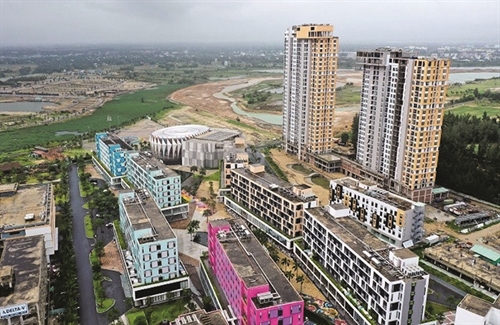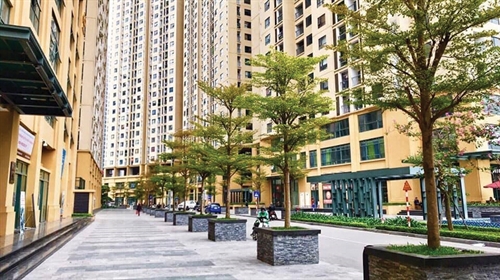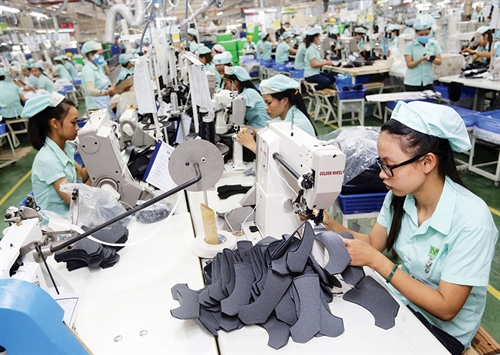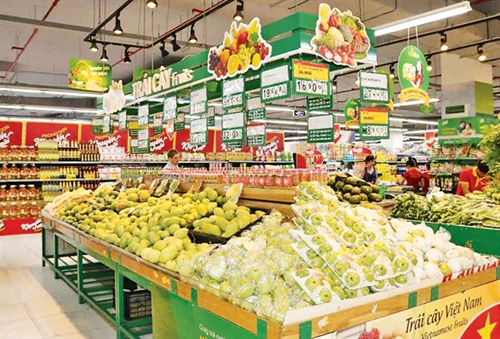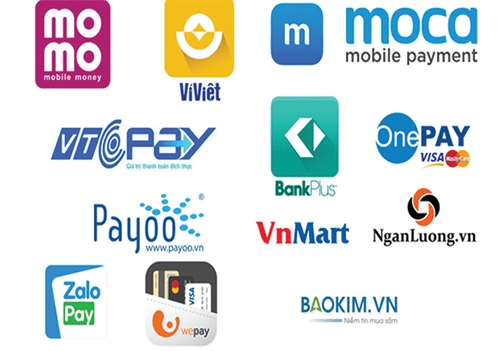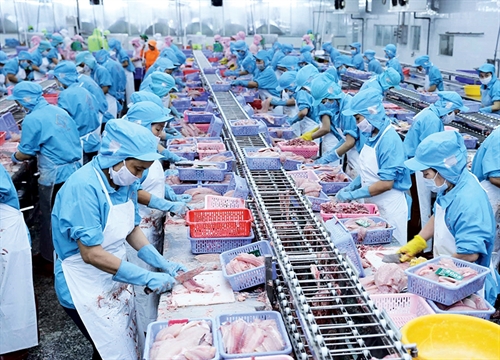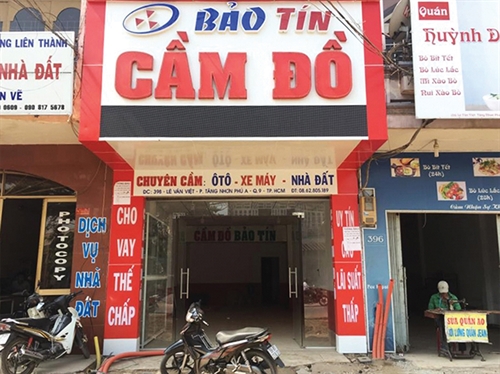The first “Cashless Day” of Vietnam was held on June 16 with a series of events designed to encourage non-cash payment in the country.
The event was an initiative launched by the Tuoi tre (Youth) daily and jointly held by the State Bank of Vietnam (SBV), the National Payment Corporation of Vietnam (NAPAS), and the Vietnam E-commerce Association (VECOM) with a view to soliciting ideas and suggestions from SBV officials, economic and financial experts, and representatives from local commercial banks on what can be done to reduce the use of cash in the country.
When cash falls out of fashion
The Vietnamese Government expressed its determination to go cashless several years ago. In late 2016, the Prime Minister issued a scheme on development of cashless payment during 2016-20. Later in mid-2019, another scheme on boosting via-bank payment for public services was adopted. Since then, the country has witnessed drastic developments in cashless payment.
According to the central bank, there are currently 127 providers of payment services via the Internet and mobile devices. As of this May, 34 non-bank institutions have been licensed to provide intermediary payment services. By the end of last year, the country had 88.5 million personal bank accounts, an 11 percent increase against the 2018’s figure. It is expected that by the end of this year, 70 percent of Vietnamese will have bank accounts.
Speaking at a press briefing in Ho Chi Minh City on the occasion of the Cashless Day, Pham Tien Dung, Director of the SBV’s Payment Department, said the use of cash as a ratio of payments has gradually fallen over the years.
Last year online payments went up by 64 percent in terms of number of transactions and 37 percent in terms of value, while mobile payments surged by 198 percent in volume and 210 percent in value.
In 2018, the interbank e-payment system safely processed transactions worth VND 73 quadrillion (USD 3.13 trillion), an average of USD 13 billion per day, up 25 percent year-on-year, while transaction value through mobile payment grew by 169.5 percent per annum.
In the first quarter of 2020, the total transaction value through the interbank e-payment system surged by 21 percent against the same period last year.
People are getting used to electronic payment of household bills. Particularly, 27 banks and 10 intermediary payment service providers have coordinated with each other to collect electricity bills for the Vietnam Electricity (EVN). Last year, electricity bills paid via banks and intermediary payment organizations doubled to nearly 90 percent and so far accounted for roughly 90 percent of EVN’s total revenues.
Electronic payments for public services have also become popular. By the end of 2019, around 50 commercial banks have been linked up with tax and customs offices and, as a result, tax amounts collected via banks accounted for 95 percent of the total tax revenues. Thirty hospitals have deployed electronic fee payment systems and some reported cashless payments making up 35 percent of all bills.
“Those who have paid their electricity bills using mobile banking services certainly do not want to be bothered during their lunch breaks by bill collectors ringing their door bell. I assure you mobile banking users do not want to go back to using cash,” Pham Tien Dung said at the press briefing.
Statistics strongly backed his opinion.
In an interview with bizhub.vn early this month, Dang Tuyet Dung, Visa Country Manager for Vietnam and Laos, revealed that according to a study themed Visa Consumer Payment Attitudes recently conducted by the company, 74 percent of Vietnamese consumers expect to increase their cashless transactions in the next 12 months since non-cash payment is more and more accepted and carrying cash will no longer be needed.
“We also did this survey in several other Southeast Asian markets, and Vietnam actually had the highest affirmative response to this question. Again, this demonstrated a very real sense of positivity and interest around digital payments in this market,” Ms. Dung said.
 |
| Paying bills via MoMo app at Co.opMart Cong Quynh, Ho Chi Minh City__Photo: Quang Dinh |
What to do to boost cashless payment
With a view to further encouraging the use of non-cash payment methods in the country, Prime Minister Nguyen Xuan Phuc last month inked Directive 22/CT-TTg, setting tasks to be promptly fulfilled by relevant authorities in the coming time.
Specifically, the Prime Minister instructed the SBV to review and propose revisions to improve the legal framework for cashless and electronic payments, thus meeting requirements for development of new payment services and models. The central bank is also asked to set up the automated clearing house (ACH) system for retail transactions by December 15 at the latest.
Another noteworthy job of the SBV is to work out appropriate policies on payment service charge rates to encourage the use of cashless payment methods. At present, almost all via-bank payment transactions are subject to charges, which range from tiny amounts of around VND 1,000 (nearly 4.3 US cents), for intra-bank transfers, to considerable rates of between 2.5 percent and 3 percent of transaction value, for payments using international credit cards. It is the payment service charge rate that somehow makes consumers hesitate about making cashless payments.
The Ministry of Industry of Trade is requested to adopt mechanisms and policies to encourage retailers to accept and use electronic payment means and promote electronic payments in e-commerce activities.
The Ministry of Finance is asked to complete the connection of banks’ electronic payment systems with those of tax, customs and state treasury offices serving the collection of state budget revenues by electronic modes. At the same time, the ministry should take solutions to enable commercial banks to look up information on declarations, dossiers and payment documents for imports and exports so as to minimize fraud risks.
Meanwhile, the Ministries of Health; Education and Training; Labor, Invalids and Social Affairs; and Transport should guide units under their management to adopt policies to boost the use of cashless payment methods in relevant fields, such as collection of hospital fees, tuition fees and road tolls, payment of social welfare, pensions and social insurance benefits, and purchase of air, train and bus tickets, etc.
In order to minimize fraud risks which may occur in cashless transactions, especially intermediary payment and electronic payment, the Government leader requires the Ministry of Public Security to review and revise regulations so as to timely detect, prevent, deter and handle violations in the sector.
In another move, the SBV has proposed to the Government a draft decision on grant of permission for pilot provision of mobile money services which will enable mobile subscribers to use money in their telecoms accounts to make small-value transactions.
The Government’s determination to promote non-cash payment is highly appreciated by people and business insiders.
In her interview with bizhub.vn, Dang Tuyet Dung also said that 79 percent of Vietnamese respondents in the Visa survey indicated that they support the Government’s desire to “go cashless”, the highest rate in the region.
Many banks, in their turn, have reduced fee for money transfer, a move which aims to help local companies overcome difficulties caused by the COVID-19 pandemic and at the same time encourage cashless payment. Statistics from NAPAS showed that 39 out of its 45 member banks have cut fee for customers by 90 percent and some offered zero charges for fast interbank transfers of sums of under VND 2 million (USD 85) from February till the end of this year.-


